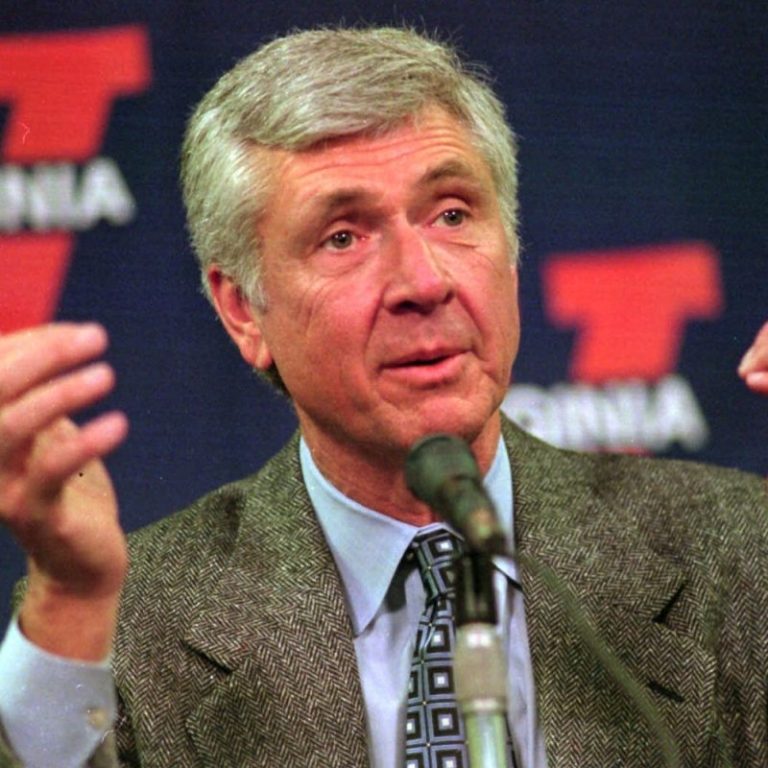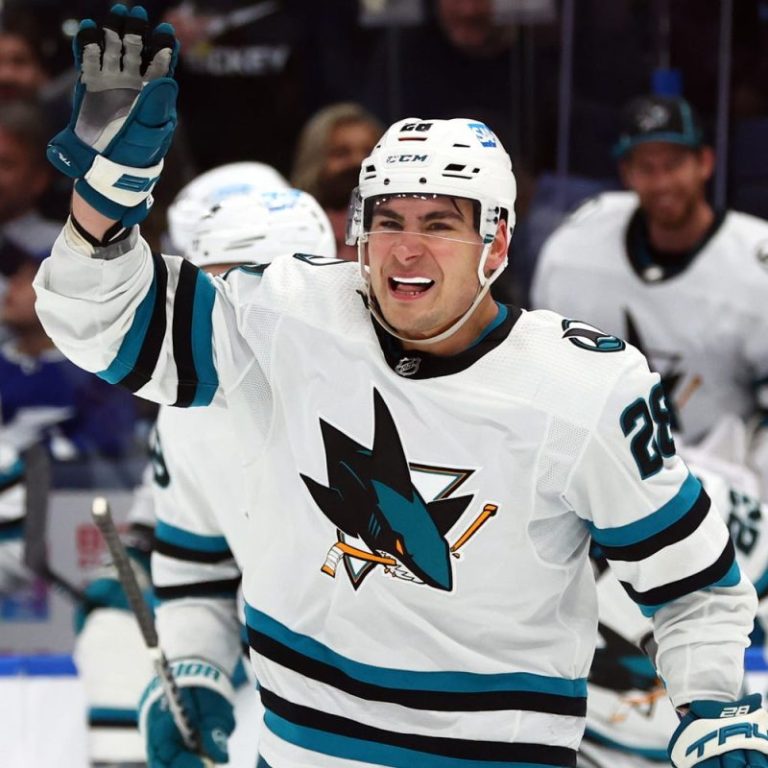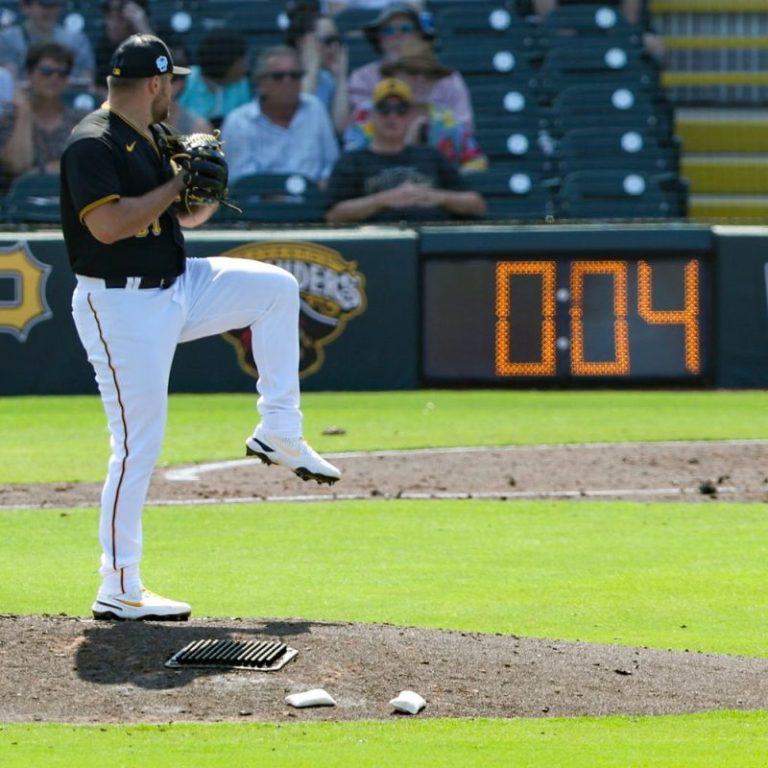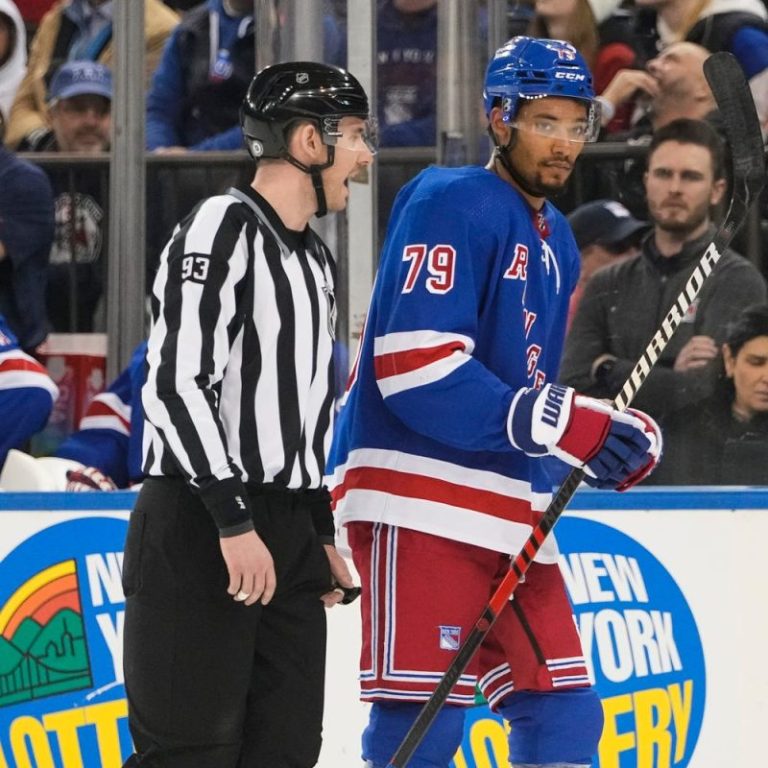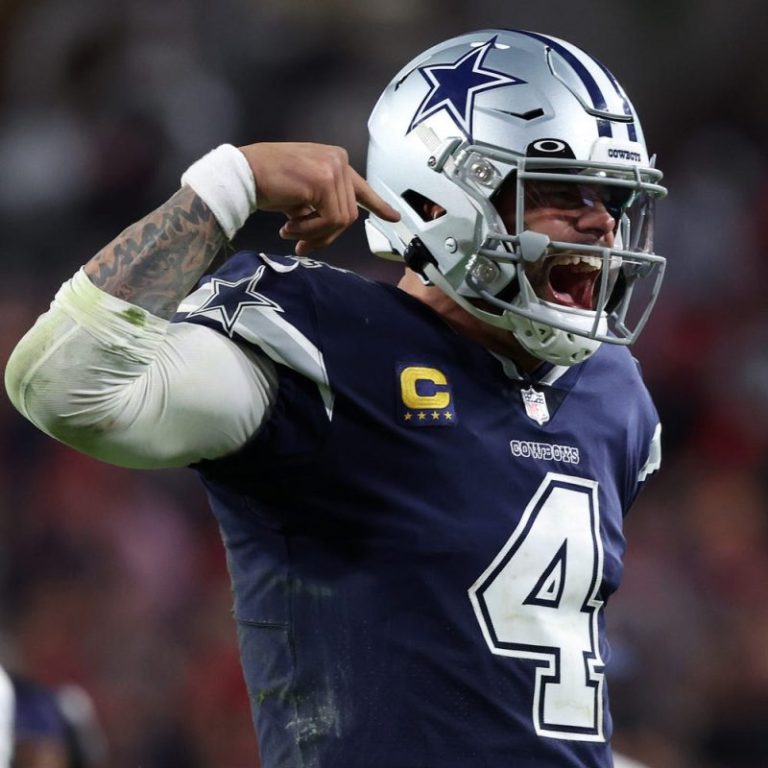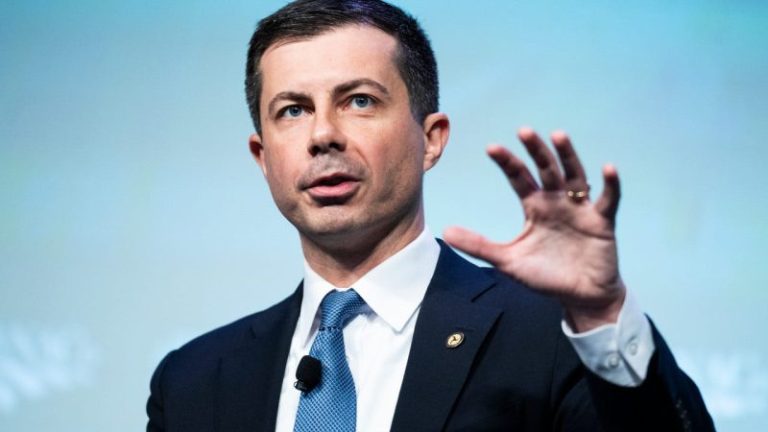The Eastern Conference contenders are beefing up for the playoffs, and the New Jersey Devils joined the mix on Sunday.
The Devils acquired speedy power forward Timo Meier, a three-time 30-goal scorer, from the San Jose Sharks in a complicated trade involving nine players, multiple draft picks and several conditions.
That helps the Devils keep up with the New York Islanders, New York Rangers, Toronto Maple Leafs (two trades) and Boston Bruins, who have all made big moves. And the Rangers might strike again, clearing cap space in an apparent effort to make a bid for Chicago Blackhawks star Patrick Kane.
Analyzing the top trades and other moves made before Friday’s deadline. A separate blog will run on deadline day.
When is the NHL trade deadline?
Follow every game: Latest NHL Scores and Schedules
The NHL trade deadline is at 3 p.m. ET on March 3.
Who are some of the bigger names who could be moved before the deadline?
Chicago’s Patrick Kane and Max Domi. San Jose’s Erik Karlsson. Vancouver’s Brock Boeser and Luke Schenn. Anaheim’s John Klingberg. Arizona’s Jakob Chychrun, Shayne Gostisbehere and Nick Bjugstad. Columbus’ Vladislav Gavrikov. Philadelphia’s James van Riemsdyk. Montreal’s Sean Monahan. Nashville’s Mattias Ekholm.
What trades, transactions or other news occurred before the March 3 deadline?
Feb. 27: The Maple Leafs acquire defenseman Jake McCabe, forward Sam Lafferty, conditional fifth-round picks in 2024 and 2025 from the Blackhawks for a 2025 first-round pick (top-10 protected), 2026 second-round pick and forwards Joey Anderson and Pavel Gogolev. McCabe is physical and block shots and he and Lafferty kill penalties. Lafferty is tied for the league lead with four shorthanded goals. The Maple Leafs need all the depth they can get as they likely will face the Lightning and Bruins in the first two rounds. The Blackhawks will retain 50% of the salary of McCabe, who has two years left on his contract.
Feb. 27: The Sabres acquire defenseman Riley Stillman from the Canucks for forward Josh Bloom. It’s not Luke Schenn, but the 24-year-old son of former NHL player Cory Stillman will provide depth on a team fighting to end a playoff drought. Plus he has another year left on his contract. Bloom, 19, is averaging about a point a game in the Ontario Hockey League.
Feb. 26: The Devils acquire forwards Timo Meier and Timur Ibragimov, defensemen Scott Harrington and Santeri Hatakka, goaltender Zachary Emond and a 2024 fifth-round pick from the Sharks for New Jersey’s 2023 first-round pick (conditional), defensemen Shakir Mukhamadullin and Nikita Okhotiuk, forwards Andreas Johnsson and Fabian Zetterlund, a conditional 2024 second-round selection and a 2024 seventh-round selection. The Devils land the prize of the trade deadline in Meier, who will make the NHL’s fifth-ranked offense even more dangerous and help improve their 19th-ranked power play. As a restricted free agent, the Devils hold the rights to re-sign him. The Sharks moved Meier, due a $10 million qualifying offer next summer, because they couldn’t make the numbers work on an eight-year deal. They get a first-round pick and potentially another. Plus, Mukhamadullin, playing in the Kontinental Hockey League, is a former first-round pick with the potential to become a top-four NHL defenseman.
Feb. 26: The Lightning acquire forward Tanner Jeannot for defenseman Cal Foote and five draft picks. Tampa Bay always seems to make the right deadline move as it has reached the Stanley Cup Final three years in a row, winning twice. Jeannot, 25, is a rugged player who scored 24 goals last season (but five this season) and will be a restricted free agent this summer. Predators general manager David Poile, who announced he’ll retire after the season, got a nice haul for successor Barry Trotz. The picks are a 2025 first-rounder (top-10 protected), a 2024 second-rounder and a 2023 third, fourth and fifth-rounder.
Feb. 26: The Avalanche acquire defenseman Jack Johnson from the Blackhawks for defenseman Andreas Englund. A depth move for the defending Stanley Cup champions. Johnson played with Colorado last season.
Feb. 26: The Golden Knights acquire forward Ivan Barbashev from the Blues for center Zach Dean. Barbashev plays a physical style (132 hits) and scored 60 points last season, though he’s at 29 this season. Vegas could use more offense with Mark Stone out. Dean, 20, was drafted 30th overall in 2021 and has 49 points in 38 games with Gatineau of the Quebec Major Junior Hockey League. Barbashev is the fourth pending unrestricted free agent that the Blues have traded recently as they retool.
Feb. 26: The Stars acquire winger Evgenii Dadonov from the Canadiens for winger Denis Gurianov. The Canadiens are retaining 50% of the salary of Dadonov, who’s a pending unrestricted free agent, Though his numbers are down this season, he’s a four-time 20-goal scorer who should put up better numbers on the deeper Stars. He was also traded at last season’s deadline (by the Golden Knights), though the deal was canceled because the Ducks were on his limited no-trade list. Gurianov, a restricted free agent, had a strong playoffs in 2020 but has been limited to nine points this season. A change of scenery could help.
Feb. 25: The Rangers trade forward Vitali Kravtsov to the Vancouver Canucks for forward Will Lockwood and a 2026 seventh-round pick. This is important because the Rangers need to shed salary if they’re going to acquire Patrick Kane from the Blackhawks. Chicago announced that the team is holding Kane (and Sam Lafferty) out of the lineup for ‘roster management.’ Kravtsov, who often has been a healthy scratch this season, has a $875,000 cap hit. The Rangers also have been sitting out Jake Leschyshyn to improve their cap space, then placed him on waivers.
Feb. 25: The Jets acquire winger Nino Niederreiter from the Predators for a 2024 second-round pick. Winnipeg’s Cole Perfetti is out long-term and Niederreiter will take his place. He has 28 points in 56 games. The Predators are seven points out of a playoff spot and look to be in sell mode. Nashville had signed Niederreiter to a two-year, $8 million contract in the offseason.
Feb. 24: The Penguins place forward Kasperi Kapanen on waivers. He was claimed by the Blues. Kapanen, who filed for arbitration and was re-signed to a two-year, $6.4 million contract, has 20 points in 43 games. The move created cap flexibility for the slumping team to activate Jan Rutta. ‘When a team doesn’t live up to expectations, as ours has of late, I think change is inevitable,’ coach Mike Sullivan told reporters. ‘Kapy is a really talented player and to a certain extent, it’s on all of us because we didn’t find a way to maximize his potential.’
Feb. 23: Bruins acquire defenseman Dmitry Orlov and forward Garnet Hathaway from the Capitals for forward Craig Smith, a 2023 first-round pick, 2025 second-round pick and 2024 third-round pick. The NHL’s top team, which could set a league record for wins, was expected to beef up for its Stanley Cup run. Orlov is a top four defenseman who will add to Boston’s depth, and Hathaway is a gritty competitor. Both are pending UFAs, as is Smith. The banged-up Capitals have lost six in a row to drop out of a playoff spot and wanted to get draft picks to make the team younger. They will retain 50% of Orlov’s salary. The Wild got involved, as they did in the O’Reilly trade, retaining 25% of Orlov’s salary and sending the rights to Kontinental Hockey League center Andrei Svetlakov to Boston for a 2023 fifth-round pick. If the Capitals do make the playoffs, they’d likely face the Bruins in the first round.
Feb. 22: Senators trade defenseman Nikita Zaitsev and draft picks to Blackhawks. Ottawa unloaded Zaitsev, who has one more year on his contract, on Chicago. That clears cap room because the Senators need to re-sign restricted free agents Alex DeBrincat, Shane Pinto and newly acquired Julien Gauthier. As payment for taking Zaitsev off the Senators’ hands, the Blackhawks are receiving more draft picks to aid in their rebuild – a 2023 second-round pick and a 2026 fourth-round pick. The only thing Chicago is sending the other way is ‘future considerations.’ – Jace Evans
Feb. 22: Golden Knights trade Shea Weber’s contract and a 2023 fifth-round pick to Coyotes for Dysin Mayo. Acquiring injured Weber’s $7.8 million-plus cap hit allow the Coyotes to stay at the cap floor if they trade Gostisbehere and/or Chychrun. His deal runs through 2025-26. Mayo is an unrestricted free agent this summer.
Feb. 19: Senators trade Tyler Motte to Rangers for Julien Gauthier and a 2023 conditional seventh-round pick. Motte returns to the Rangers and will inject their bottom six with much-needed speed and add a proven penalty killer to the mix. His relentless style of play was especially effective for them during last year’s run to the Eastern Conference final, giving coach Gerard Gallant the energetic pest he needed to execute his aggressive forechecking system. – Vincent Z. Mercogliano, lohud.com
Feb. 17: Maple Leafs acquire Blues center Ryan O’Reilly in three-team deal. Toronto, which has not won the Stanley Cup since 1967 and has not even won a playoff round since 2004, made a big move in a bid to end its playoff woes. The Maple Leafs acquired Blues captain Ryan O’Reilly and forward Noel Acciari and prospect Josh Pillar in three-team deal that also includes Minnesota. St. Louis gets Mikhail Abramov, Adam Gaudette and three draft picks (Toronto’s 2023 first, Ottawa’s 2023 third, and Toronto’s 2024 second). The Wild receive the Maple Leafs’ fourth-round pick in 2025. St. Louis will retain 50% of O’Reilly’s salary while Minnesota retains 25%. O’Reilly is a pending free agent. While he’s not having the best year of his career (just 19 points in 40 games) the 32-year-old who collected the Selke (best defensive forward) and Conn Smythe (playoff MVP) trophies in 2019 should make the Leafs incredibly potent down the middle. For the Blues, trading their captain after trading longtime winger Vladimir Tarasenko indicates they are throwing in the towel and turning their eyes to the future. – Jace Evans
Feb. 13: Arizona Coyotes defenseman Jakob Chychrun will remain a healthy scratch. The quote from coach Andre Tourigny: ‘He will remain out of the lineup until something happens for us.’ Chychrun would be a big addition to a contender, though he would fetch a high price.
Feb. 11: The Arizona Coyotes announced that defenseman Jakob Chychrun was a healthy scratch for trade related reasons. Chychrun can give the Coyotes their greatest return in their rebuild. He’s skilled and has two seasons beyond this one for a reasonable $4.6 million salary cap hit. Considering defenseman Shayne Gostisbehere recently got hurt, the Coyotes need to protect their assets. And if a trade doesn’t happen immediately, not having Chychrun on the ice will help them get better draft lottery odds for Connor Bedard.
Feb. 9: The New York Rangers acquire forward Vladimir Tarasenko and defenseman Niko Mikkola from the St. Louis Blues for a conditional 2023 first-round draft pick, a conditional 2024 fourth-round pick, forward Sammy Blais and defenseman Hunter Skinner. Tarasenko, an All-Star this season even with reduced numbers as he missed time with an injury, boosts the Rangers’ top six and they didn’t have to give up one of their top youngsters to get him. He’s a six-time 30-goal scorer who puts up good playoff numbers. The Rangers also hold the Dallas Stars’ first-round pick and they’ll give up the lower pick, helping them in this year’s deep draft. Mikkola is a 6-4 shutdown defenseman who kills penalties and is an upgrade on defenseman Libor Hajek, who was placed on waivers. Blais used to play for the Blues and put up better numbers there. He had no goals with New York. Both he, Mikkola and Tarasenko are pending unrestricted free agents. The Blues will retain 50% of Tarasenko’s salary.
Feb. 6: Chicago Blackhawks star Patrick Kane addresses his future. The pending unrestricted free agent has a no-movement clause and told reporters he’s ‘not really at that point’ about deciding whether to waive it. He did say agent Pat Brisson has told him ‘a few’ teams have reached out. “We’re probably taking it up to the deadline before making a decision,’ he said. Meanwhile, captain Jonathan Toews has missed the past two practices because of a non-COVID illness, coach Luke Richardson said. Toews also has a no-movement clause.
Feb. 5: The Seattle Kraken acquire defenseman Jaycob Megna from the San Jose Sharks for a 2023 fourth-round draft pick. He 6-6, 220, adding size to a defense that also has 6-7, 255 Jamie Oleksiak. He averages 19 minutes a game and was a plus player on a Sharks team that was full of minuses. He’s signed through 2024. The Kraken have until June 15 to decide whether the pick they give up is theirs or the one that belonged to the Colorado Avalanche.
Feb. 5: New York Islanders sign Bo Horvat for eight years. Islanders general manager Lou Lamoriello, as usual, didn’t reveal terms, joking, ‘All I can tell you it’s too long and too much money.’ But Sportsnet’s Elliotte Friedman reports the cap hit is $8.5 million, which puts Horvat second on the team behind Mathew Barzal ($9.15 million). Knowing that Horvat is more than a rental makes this deal even better. He and Barzal, the Islanders’ most skilled offensive players, are signed through 2030-31.
Feb. 4: The Washington Capitals announce a three-year, $5.7 million extension for forward Sonny Milano. That’s two signings in two days for the Capitals. Milano (Ducks), like Dylan Strome (Blackhawks) the day before, came to the Capitals as free agents after their previous team didn’t qualify them. Milano didn’t join the Capitals until Nov. 5 and has 22 points in 40 games.
Feb. 3: The Washington Capitals announce a five-year, $25 million extension for center Dylan Strome. The pending restricted free agent wasn’t going to be moved, but the Capitals did well to lock him up long-term. He was an important offseason acquisition, helping the team get through the early absence of Nicklas Backstrom, plus ranking third on the team in points and power play points.
Feb. 1: The Columbus Blue Jackets announce forward Gustav Nyquist (shoulder) is likely out for the season. He is on an expiring contract and the Blue Jackets could have received something in return for him had he been healthy.
Jan. 30: The New York Islanders acquire forward Bo Horvat from the Vancouver Canucks for forwards Anthony Beauvillier and Aatu Raty and a protected 2023 first-round draft pick. This deal solves two problems. The Canucks couldn’t offer Horvat enough to account for his All-Star season, and the Islanders are having trouble scoring. Islanders general manager Lou Lamoriello said it was incumbent upon him to try to fix that, and he made a very good start. Horvat has 31 goals this season – matching his career best from last season – and 54 points in 49 games. He had four assists in his final game with the Canucks, and is the Islanders’ new leader in goals, points and power play goals and points. That could make the difference on a team that has had to rely too much on its stellar goaltending. The deal will be even better if the Islanders can re-sign Horvat. The Canucks wanted back players who could step into the lineup. Beauvillier has had a 20-goal season but just nine this season. Raty, the Islanders’ top prospect, could benefit from a change of scenery. The draft pick would move to 2024 if it lands in the top 12. Vancouver will retain 25 percent of Horvat’s salary.
Jan. 25: The Colorado Avalanche acquire forward Matt Nieto and defenseman Ryan Merkley from the San Jose Sharks for defenseman Jacob MacDonald and forward Martin Kaut. The banged-up Avalanche need depth players, and Nieto played for them previously. Merkley, a former first-round pick, never found a place with San Jose. Sharks general manager Mike Grier ends up getting some assets for Nieto, a pending unrestricted free agent. His better test will be the return if he deals Karlsson or Meier.
Dec. 19: The Florida Panthers acquire forward Givani Smith from the Detroit Red Wings for defenseman Michael Del Zotto. Detroit then trades Del Zotto to the Anaheim Ducks for forward Danny O’Regan. Smith didn’t pan out a fourth-line grinder with the Red Wings. He fills that role in Florida.
Nov. 23: The Minnesota Wild acquire forward Ryan Reaves from the New York Rangers for a fifth-round 2025 pick. The Rangers made this move early in the season to give them more cap space to make a bigger move at the deadline. The Wild were interested in Reaves’ toughness.
Nov. 23: The Toronto Maple Leafs acquire defenseman Conor Timmins from the Arizona Coyotes in exchange for forward Curtis Douglas. The Maple Leafs were missing three defensemen at the time, and Timmins adds to their defensive depth.
This post appeared first on USA TODAY

